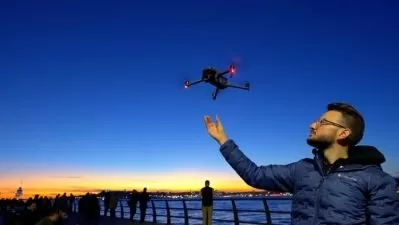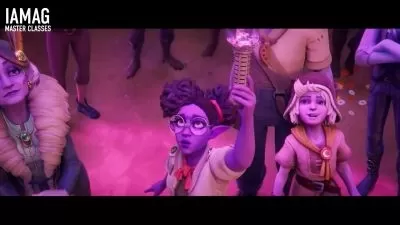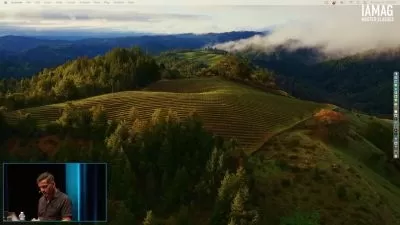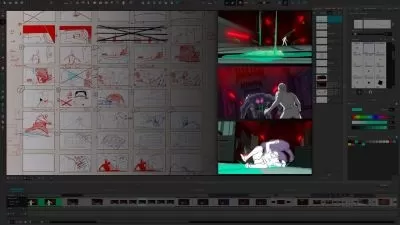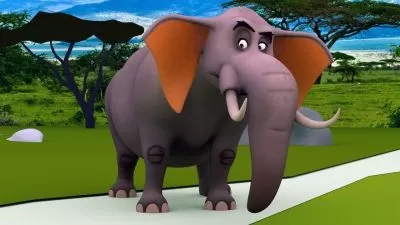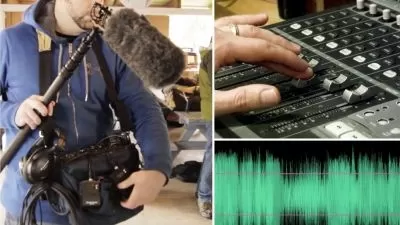About FilmmakingLearn More
Filmmaking is the art of creating moving pictures to communicate information or provide entertainment. There are many elements of filmmaking, from lighting and sound design to film directing and camera operation, and many others. Udemy offers filmmaking classes that can teach you all of the necessary skills to create your own moving artwork.
Sort by:
Sorting
The newest
Most visited
Course time
Subtitle
Filtering
Courses
Subtitle

IAMAGThe Full Guide for Visualization of a Story by Maria Gorbacheva
5:22:02
English subtitles
01/09/2025
Subtitle

Master Class


The Duffer Brothers
The Duffer Brothers Teach Developing an Original TV Series 5:18:08
English subtitles
05/30/2024
Frequently asked questions about Filmmaking
Filmmaking is the process of creating a film, or an audiovisual work of art that captures the motion of characters, environments, and camera movements in concert with sound — both diegetic (sound from the narrative, such as dialogue and environmental sources) and non-diegetic (such as soundtrack music or narration). A filmmaker's job is to collect those images and sounds using cameras and sound recording devices. In basic terms, the filmmaker creates scenes, captures scenes, then edits the scenes together into a narrative structure. They almost always collect these pieces out of order. Each scene is planned before shooting, down to the camera angles required to construct it. Those individual shots come together to form a scene, scenes stitch together to make a sequence, and individual sequences create the entire narrative. Typically, dozens of people make a film: creatives, production staff, postproduction dept. Understanding the different roles is key to understanding filmmaking.
There are three basic stages of filmmaking: preproduction, production, and postproduction. Preproduction is all about the development and planning of the filmmaking project. First, there is a screenplay written. Then a script breakdown will identify everything the project needs. That includes the budget, cast and crew, equipment, locations, wardrobe, makeup, sets, props, storyboards, shot lists, and a production schedule. From there, all of those items need to be secured. Then, production begins. Those are the days and nights you capture principal photography for the project, lensing every scene and camera angle on your shot list as scheduled. Once production wraps up, you move into postproduction: editing, sound design, special effects, pickup shots, soundtrack, sound mix, color correction, additional dialogue replacement, foleys, and titles. The final stage of postproduction is marketing and selling the film. Think festival screenings, internet exposure, and industry events.
As is the case with any technical work, there’s a big difference between a hobby and expertise. You can absorb the concepts behind each of the elements of filmmaking fairly easily. Fundamentally, you are capturing images and recording sound then assembling those elements into a sequence. But there’s a lot of moving parts that go into filmmaking. Learning how to conduct all of them into a final work that is cohesive, engaging, and rewarding to audiences means employing a harmonic execution of dozens if not hundreds of craftspeople. It begins with watching film and studying film theory: everything from the rules of editing to lighting and acting. To become a truly successful filmmaker, one must understand them all and how they work together.
There are four elements to film. First is the mise-en-scène (French for “put into the scene”), or everything you'll see on the screen. That means set design, props, wardrobe, makeup, actors – everything that the audience needs to see to fulfill the filmmaker's intended vision. The second element is cinematography: the craft of capturing the mise-en-scène. It’s not just rolling the camera – it’s lighting, blocking, camera movements, and more. The third element of filmmaking is sound. Audio cues enhance the audience experience. Primary sound is captured during principal photography. Uncaptured dialogue and environmental sounds are dubbed during postproduction. Music and sound design transmit mood and emotion and are also added in post. The fourth element of filmmaking is editing. Editing is the assembly of individual shots into a montage to create sequences. In the same way that brushstrokes form a painting, editing is the basic unit of cinema.
Filmmaking is a collaborative process, taking anywhere from a dozen people to thousands. Therefore, anyone who works in the making of a film can refer to themselves as a filmmaker. Two positions in filmmaking are most commonly associated with the term: producers and directors. A producer is certainly a filmmaker. But they do not play the same role as a director. Producers have many functions. They secure financing, ensure equipment is available, assemble personnel, secure locations, and many more tasks. The director is the person who controls the vision of the film. Theirs are the day-to-day, moment-to-moment decisions about which shape the final vision. They direct the cast and crew from the set to the editing room. Is the director also a filmmaker? Yes. But the rest of the filmmakers are not the director. In most cases, the vision comes from the director. All the other filmmakers are essential and obviously contribute to the vision, but the final word belongs to the director.







